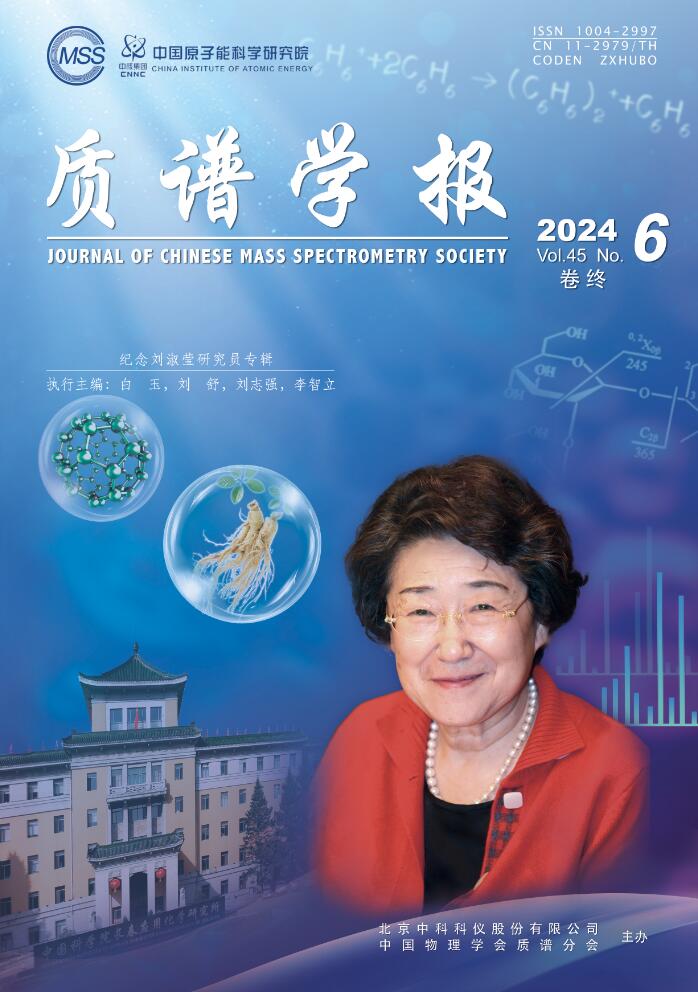Mass Spectrometric Analysis of Post-Translational Modifications on SARS-CoV-2 Viral Proteins and Its Cellular Receptor ACE2
Q4 Physics and Astronomy
引用次数: 0
Abstract
COVID-19 has caused a huge health crisis and incalculable damage worldwide. Emerging immune escaping mutants of the virus suggests that SARS-CoV-2 may be persistent in human society like the flu virus and become a long-lasting health threat. The control of SARS-CoV-2 transmission and the development of an effective treatment are imminent. Therefore, it is imperative to find appropriate biomarkers to indicate pathological and physiological. Proteins are performers of life functions and their abundance and modification status can directly reflect the immune status. Post-translational modifications such as glycosylation and phosphorylation have a great impact on the regulation of protein functions. In the studies of SARS, Zika, and H1N1, post-translational modified proteins have shown to be reliable biomarkers. In recent years, mass spectrometry-based proteomics has made great progress due to the development of mass spectrometry technology. A review of research strategies for mass spectrometry-based biomarkers, especially in the application of protein post-translational modifications, is important for the victory of human beings fighting the Covid-19 epidemic. This review summarized the current progress of mass spectrometry-based studies on the PTM status of SARS-CoV-2 viral proteins, particularly in glycosylation and phosphorylation aspect. The challenge and prospect of the application of mass spectrometry in this particular research area were outlined. © 2021, Editorial Board of Journal of Chinese Mass Spectrometry Society. All right reserved.SARS-CoV-2病毒蛋白及其细胞受体ACE2翻译后修饰的质谱分析
COVID-19在全球范围内造成了巨大的健康危机和无法估量的损失。新冠病毒的免疫逃逸突变体的出现表明,SARS-CoV-2可能会像流感病毒一样在人类社会中持续存在,成为长期的健康威胁。控制SARS-CoV-2的传播和开发有效的治疗方法迫在眉睫。因此,寻找合适的生物标志物来指示病理和生理是势在必行的。蛋白质是生命功能的执行者,其丰度和修饰状态可以直接反映机体的免疫状态。糖基化和磷酸化等翻译后修饰对蛋白质功能的调控有很大影响。在对SARS、Zika和H1N1的研究中,翻译后修饰蛋白已被证明是可靠的生物标志物。近年来,由于质谱技术的发展,以质谱为基础的蛋白质组学研究取得了很大的进展。回顾基于质谱的生物标志物的研究策略,特别是蛋白质翻译后修饰的应用,对人类战胜新冠肺炎疫情具有重要意义。本文综述了基于质谱技术的SARS-CoV-2病毒蛋白PTM状态的研究进展,特别是糖基化和磷酸化方面的研究进展。概述了质谱法在这一特定研究领域应用的挑战和前景。©2021,中国质谱学会学报编辑委员会。版权所有。
本文章由计算机程序翻译,如有差异,请以英文原文为准。
求助全文
约1分钟内获得全文
求助全文
来源期刊

质谱学报
Physics and Astronomy-Atomic and Molecular Physics, and Optics
CiteScore
0.90
自引率
0.00%
发文量
2680
期刊介绍:
Journal of Chinese Mass Spectrometry Society, founded in 1980, is a bimonthly academic journal under the supervision of the Chinese Academy of Sciences, organised by the Mass Spectrometry Branch of the Chinese Physical Society, Beijing Zhongke Keyi Technology Development Co, Ltd, and hosted by the China Institute of Atomic Energy Science. The journal mainly publishes new theories, methods and techniques of mass spectrometry in basic disciplines such as physics, chemistry, biochemistry, material science, nuclear science, earth science, life science and its application research results in various fields, and at the same time, it introduces the latest progress of mass spectrometry and its related technologies in the research of the above mentioned frontier subjects, and demonstrates the mass spectrometry technology in agriculture, petroleum, geology, medicine, chemical industry, clinical medicine, bioengineering, It also presents the research results of mass spectrometry in agriculture, petroleum, geology, pharmaceuticals, chemical industry, clinical medicine, bioengineering, atomic energy, isotope analysis, environmental monitoring, food quality control, material analysis, public security and justice, military departments, and other fields of national economy.
The journal has been published by EI, Scopus, DOAJ, Chinese Core Journals, China Science and Technology Paper Statistical Source Journals (China Science and Technology Core Journals), China Science Citation Database (CSCD), World Impact Index of Science and Technology Journals (WJCI), Chemical Abstracts of the United States (CA), Japan Science and Technology Agency (JST), Russian Abstracts Magazine (Pж(AJ)), Analytical Abstracts, Chinese Academic Journals, and Chinese Academic Journal of the United States (CJJ). Analytical Abstracts, China Academic Journal Comprehensive Evaluation Database (CAJCED), China Journal Full Text Database (CJFD), China Academic Journals (CD-ROM), Chinese Science and Technology Journal Database, National Abstracts of Inorganic and Analytical Chemistry (NACAC), Founder's Apabi e-journals, Superstar Journals Database, etc., and has been included in the network of ‘Wanfang Data-Digital Journal Group’, Taiwan Chinese electronic journals. It has also been included in ‘Wanfang Data-Digital Journal Group’, Chinese Electronic Periodical Service in Taiwan-CEPS, Chongqing Wipu Science and Technology Journal Database, and Shusheng Digital Journals.
 求助内容:
求助内容: 应助结果提醒方式:
应助结果提醒方式:


